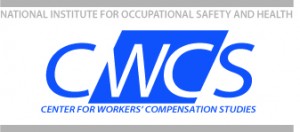Using Workers’ Compensation Records for Safety and Health Research
Posted on by Workers’ compensation insurance has been established in all states to provide income protection, medical treatment, and rehabilitation for employees who are injured or become ill as a result of work. Workers’ compensation claims and medical treatment records along with other information resources have been used to conduct occupational safety and health research and surveillance and to identify intervention needs. The Washington State Department of Labor and Industries Safety and Health Assessment and Research for Prevention (SHARP) program, among many other public health agencies, have produced numerous publications based on workers’ compensation data analysis.
Workers’ compensation insurance has been established in all states to provide income protection, medical treatment, and rehabilitation for employees who are injured or become ill as a result of work. Workers’ compensation claims and medical treatment records along with other information resources have been used to conduct occupational safety and health research and surveillance and to identify intervention needs. The Washington State Department of Labor and Industries Safety and Health Assessment and Research for Prevention (SHARP) program, among many other public health agencies, have produced numerous publications based on workers’ compensation data analysis.
Earlier this week, NIOSH released a document, Workers’ Compensation Insurance: A Primer for Public Health to help public health researchers and practitioners, particularly those in occupational safety and health, broaden their understanding of workers’ compensation insurance, relevant aspects of the insurance industry records, and the potential uses of that information for public health purposes. The primer contains background and a brief history of the workers’ compensation programs in the U.S. It also describes: (1) benefits and premiums; (2) the relationship between premiums and safety incentives; (3) roles of insurers, state agencies and third party administrators; (4) types of policies; (5) claims and other workers’ compensation insurance information on medical treatments, costs and disability status; (6) limitations of current industry data standards; (7) loss prevention programs; and (8) public health research, surveillance and regulations. A glossary of workers’ compensation terms and a guide for prospective research and surveillance projects are also included.
Did You Know?
|
The primer follows two workshops (September 2009 and June 2012) sponsored by several government agencies, including NIOSH, and private organizations on the use of workers’ compensation data for occupational safety and health purposes. Workshop participants noted that while much progress is being made in understanding the merits of workers’ compensation data resources, significant limitations exist. For example, these data appear to constitute an incomplete record of occupational injuries and illnesses at the state level. While standards for collecting and compiling the data exist, they are not universally used. Some fields on the record forms are often blank or incomplete and essential information for public health purposes, such as occupation, race, ethnicity, and duration of employment, may not be recorded. Multiple parties add data to the records at various stages as claims work their ways through the employees, employers, medical facilities, third-party administrators and state agencies.
Yet, important public health research and surveillance can be conducted with available data as long as the limitations and their effects on generalizability are considered. For example, workers’ compensation records contain information on medical treatments and their costs, hospitalizations, degree and length of disability, and use of rehabilitation services. In some states, such as California and Washington, the workers’ compensation claims information is used to identify more hazardous industries or leading events for claims across all industries. Other research organizations, state-based surveillance programs, and workers’ compensation agencies and associations have used claims data for research and surveillance purposes (specific citations are listed in the primer). Collaborations have been mostly within states due to problems with combining data from multiple jurisdictions. NIOSH is promoting additional collaborations which would create further opportunities to use workers’ compensation records and related information to prevent occupational injuries, illnesses and fatalities.
Development of the primer and creation of the NIOSH Center for Workers’ Compensation Studies (CWCS) are first steps in better utilizing workers’ compensation data for workplace injury and illness prevention. We welcome your suggestions on how to utilize workers’ compensation data more effectively or how to develop effective partnerships between data custodians and public health agencies, and we would appreciate hearing from you in the comment section below.
David F. Utterback, Ph.D.; Alysha R. Meyers, Ph.D., AEP; Steve Wurzelbacher, PhD, CPE, ARM
Dr. Utterback is a Senior Helath Scientist and the NORA Services Sector Coordinator.
Dr. Meyers is an Epidemiologist in the NIOSH Division of Surveillance, Hazard Evaluations and Field Studies.
Dr. Wurzelbacher is the Director of the NIOSH Center for Workers’ Compensation Studies (CWCS).
Posted on by

